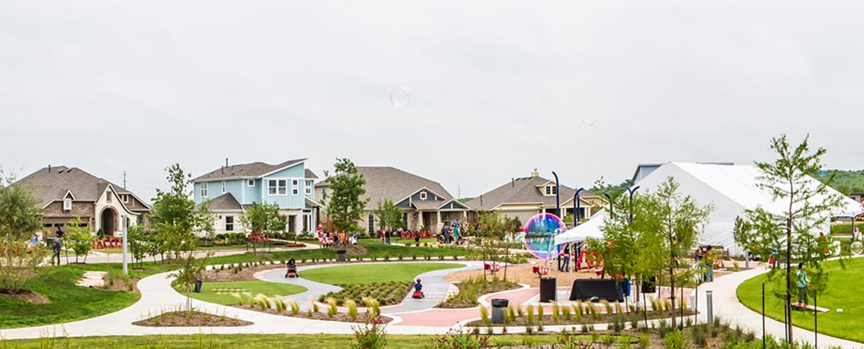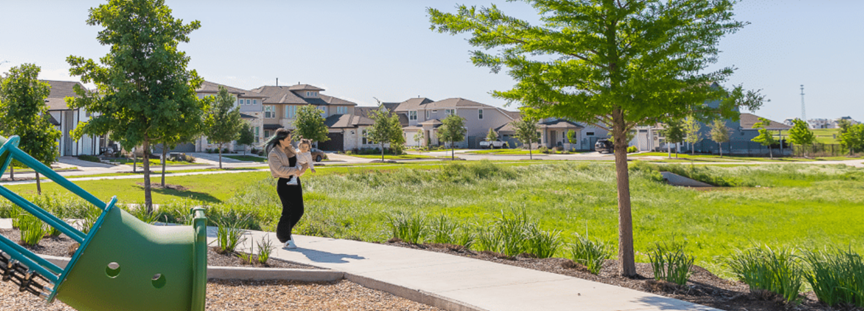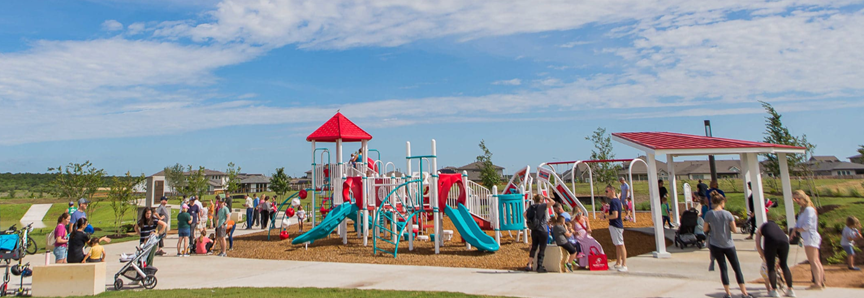How APR Supports the Easton Park Vision
Behind Easton Park’s cohesive design and smooth operation lies a deliberate decision by Brookfield Residential to partner with best-in-class consultants, including making a strategic change to Architectural Plan Review (APR) for design guideline administration and architectural review services.
The decision to switch providers after working with their previous architectural review company for several years wasn’t made lightly. “We wanted more clarity on what was happening,” explains AJ Zorn, director of land at Brookfield Properties. “Really being able to understand the time process of when reviews were going in, if there were issues, what were the issues, and being able to see them.”

As a developer overseeing multiple builders, Zorn needed comprehensive data to identify trends and solve systemic issues. “I would hear different comments, and I was trying to solve more global problems. Is this a trend I’m seeing? How many times are we getting re-inspections? How many variances, and is it all the same group or across all builders?” The previous provider couldn’t deliver this level of transparency. The search for a new architectural review partner led consistently to APR. “APR just kept coming up as recommended, within Brookfield and with others around the country,” Zorn recalls.
When Zorn met with APR’s team, the alignment felt immediate. “It was like A’Lisa had read my mind when I listed my pain points. As she informed me about what APR provides, she was going right down my list of priorities.” A key differentiator was APR’s technology platform, APRTrac, which provides real-time visibility into the architectural review process. “That’s what sold me,” Zorn explains. “I said, if only there was some way that I could see this information. APR said, ‘well, let us show you this website.’ As soon as they showed me APRTrac, I was sold.”

The platform allows all stakeholders—from developers to builders to sales teams—to access current information about project status, color coordination, and approval processes. This transparency has eliminated many of the communication gaps that previously caused delays and confusion. The transition to APR included a complete rewrite of Easton Park’s design guidelines—a six-to-seven-month collaborative process. “We started ‘dating’ around July of last year, but it took us until April because I wanted to make sure everything was perfect before we made this transition,” Zorn notes.
APR brought expertise from their work with numerous other developers, offering proven solutions to common challenges. “Every time I asked, ‘can y’all just give me examples of how this has been done,’ they were able to say, ‘well, here are several. We did this over here, we don’t feel it was successful. We’ve done this over here, this worked better, etc.'” One significant improvement was addressing color coordination—ensuring houses of similar colors aren’t clustered together. The previous system would catch color conflicts only at final inspection, creating last-minute crises for homebuyers. APR’s platform allows real-time color tracking, so sales teams can see what colors are already planned for each street and make informed decisions upfront.
“Now APRTrac provides builder salespeople with APRTrac portal access. They can see that Builder A is putting a red house on one side of a lot, and Builder B is slating a red house on the other. As Builder C, I know that the red color is not an option,” Zorn explains.

“Now APRTrac provides builder salespeople with APRTrac portal access. They can see that Builder A is putting a red house on one side of a lot, and Builder B is slating a red house on the other. As Builder C, I know that the red color is not an option.”
— AJ Zorn, Director of Land, Brookfield Properties
The move to APR reflects Brookfield’s broader philosophy of working with best-in-class partners. “We just want the best in class when it comes to our consultants and contractors,” Zorn emphasizes. “You overall just get better product at the end.” This approach has saved significant time and reduced friction in the development process. When variances arise, APR provides comprehensive documentation including location maps, surrounding floor plans, and clear explanations—information that previously required multiple back-and-forth communications to obtain. The investment in professional architectural review services ultimately supports Easton Park’s market positioning and quality standards, ensuring that the community’s distinctive character is maintained as it continues to grow.

As Easton Park continues to grow and evolve, it serves as a compelling case study in how thoughtful development can successfully bridge the gap between urban and suburban living. By understanding and responding to the genuine desires of modern homebuyers, rather than relying on outdated assumptions about what suburban buyers want, the community has created something distinctly Austin while remaining accessible to a broader market. The development’s success suggests that the future of suburban development lies not in simply building bigger homes with more amenities, but in creating authentic communities that reflect the values and lifestyles of contemporary buyers. In Easton Park’s case, that means celebrating outdoor living, embracing urban-inspired design, fostering operational excellence through strategic partnerships, and creating a community where residents can live thoughtfully and intentionally.
“We just want the best in class when it comes to our consultants and contractors. You overall just get better product at the end.”
— AJ Zorn

In the ever-evolving landscape of Austin-area development, Easton Park stands out as a master-planned community that has successfully captured the essence of what modern homebuyers—particularly millennials—want in suburban living. Located in Austin’s extraterritorial jurisdiction (ETJ), this Brookfield Properties development offers an Austin address with a fresh take on traditional neighborhood design.
For more information about Easton Park, visit https://www.eastonparkatx.com
